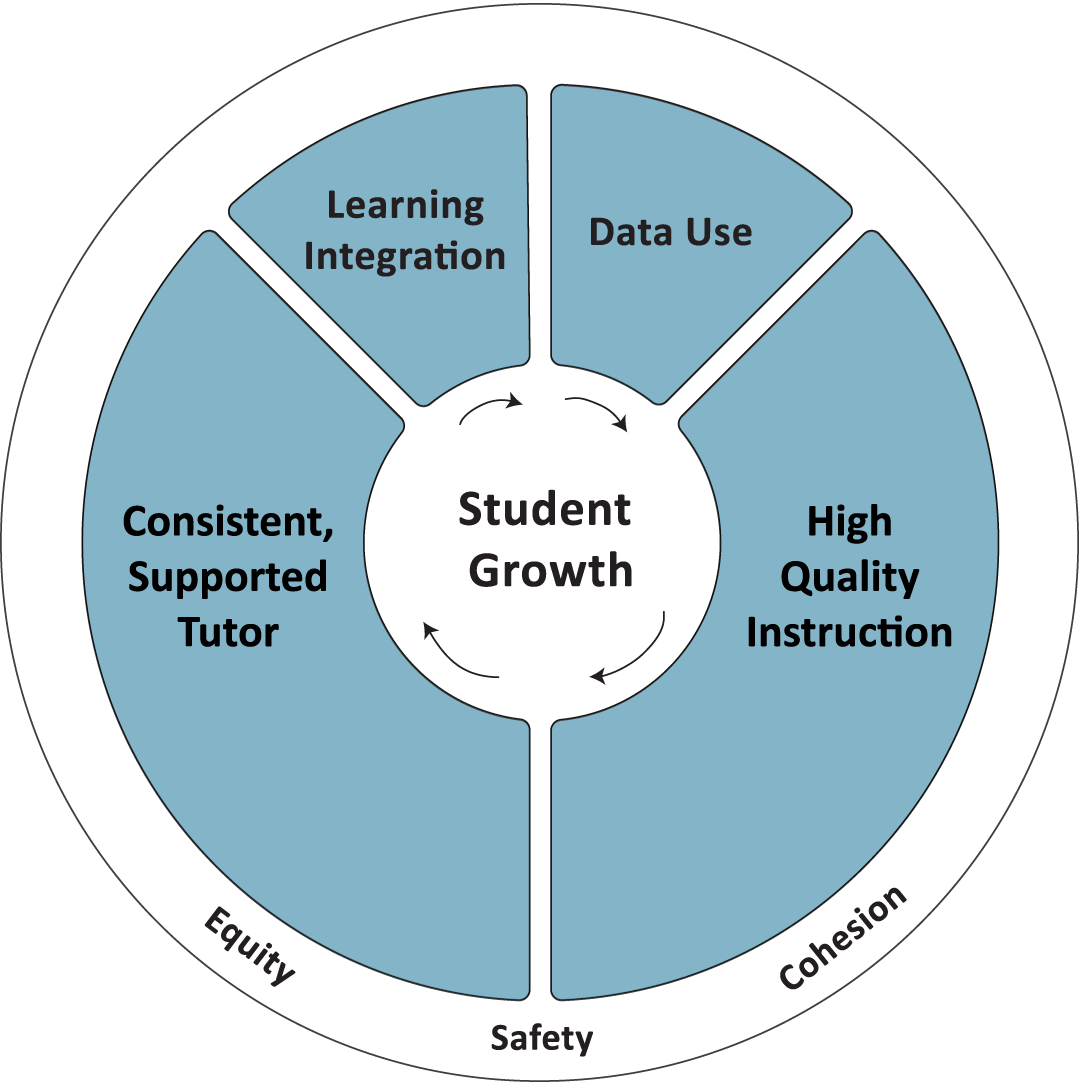What is High-Impact Tutoring
High-impact tutoring is one-on-one or small group instruction with the following characteristics:
- three or more sessions per week, each one at least 30-minutes long (6-12 graders can benefit from longer 45- to 60-minute sessions),
- a focus on cultivating tutor-student relationships,
- use of formative assessments to monitor student learning,
- alignment with the school curriculum,
- led by a trained and supported tutor. 1
High-impact tutoring leads to substantial learning gains for students by supplementing (but not replacing) students’ classroom experiences.

Short powerpoint on High-Impact Tutoring
Funding for districts is available now through 2023 through American Rescue Plan Act funding. Districts should consider proactively collecting qualitative and quantitative data to support the sustainability of their programs after American Rescue Plan Act funding is spent.
While high-impact tutoring requires thoughtful planning, districts across the nation are implementing this effective and equitable academic intervention and some states (e.g., TN, TX, DC) are even requiring it for certain student groups who are behind academically.
Below are some examples of high-impact tutoring programs and the elements of their approach.
How can I bring high-impact tutoring to my school/district?
Districts are creating and implementing Covid recovery plans with American Rescue Act (ARPA) funding now. High-impact tutoring is one of the most effective options that qualifies for ARPA funding and comes with the extra benefits of a supportive relationship between the tutor and the student.
As an educator, you can lay the foundation for bringing high-impact tutoring to your students by first learning more about high-impact tutoring yourself by reviewing the information in this packet and reaching out to the Accelerator with any questions you may have. If you believe high-impact tutoring hold potential for your students, then consider these next steps:
Share information with 2-5 colleagues and ask them to share with others
- High-Impact Tutoring FAQ’s for Educators
- Sample email including short presentation
- Talking points
- One-pager
Share information with your school and district leadership
Share information with your union leaders
Additional resources available include:
- High-Impact Tutoring FAQ’s Answers to the most common questions about high-impact tutoring and how to implement it at your school/district.
- Tutoring Database A searchable database of over 200 tutoring programs and technology platforms to help districts and schools identify potential tutoring partners.
- District Playbook A research-based guidebook and accompanying Workbook to help districts assess their needs, design and implement their own program or partner with a provider to launch a High-Impact Tutoring program.
- Tutoring Program Cost Calculator A simple tool that education institutions or tutoring organizations can use to estimate the cost of their tutoring program and to help understand how the costs of their tutoring program will vary based on key design elements such as tutor type, student to tutor ratio and dosage.
- Toolkit for Tutoring Programs A cohesive set of practical, research-based tools for tutoring organizations or districts to design and implement a new tutoring program or improve an existing one.
- Funding Tutoring Programs A summary of funding sources for High-Impact Tutoring programs.
- Tutoring Quality Improvement System A rapid, free, and research-based tool for developing and existing tutoring programs to assess their program’s quality against industry standards and receive targeted recommendations to improve program quality.
- High-Impact Tutoring: State of the Research and Priorities for Future Learning A summary of tutoring research that identifies characteristics of high-impact tutoring.
- State Tutoring Efforts and Legislation Database: includes an initial set of statewide tutoring efforts and state tutoring legislation.
[1] Tutors are an additional vetted and trained resource and are coached and managed by someone other than the classroom teacher. High-impact tutoring is intended to support classroom educators rather than add additional responsibilities.



